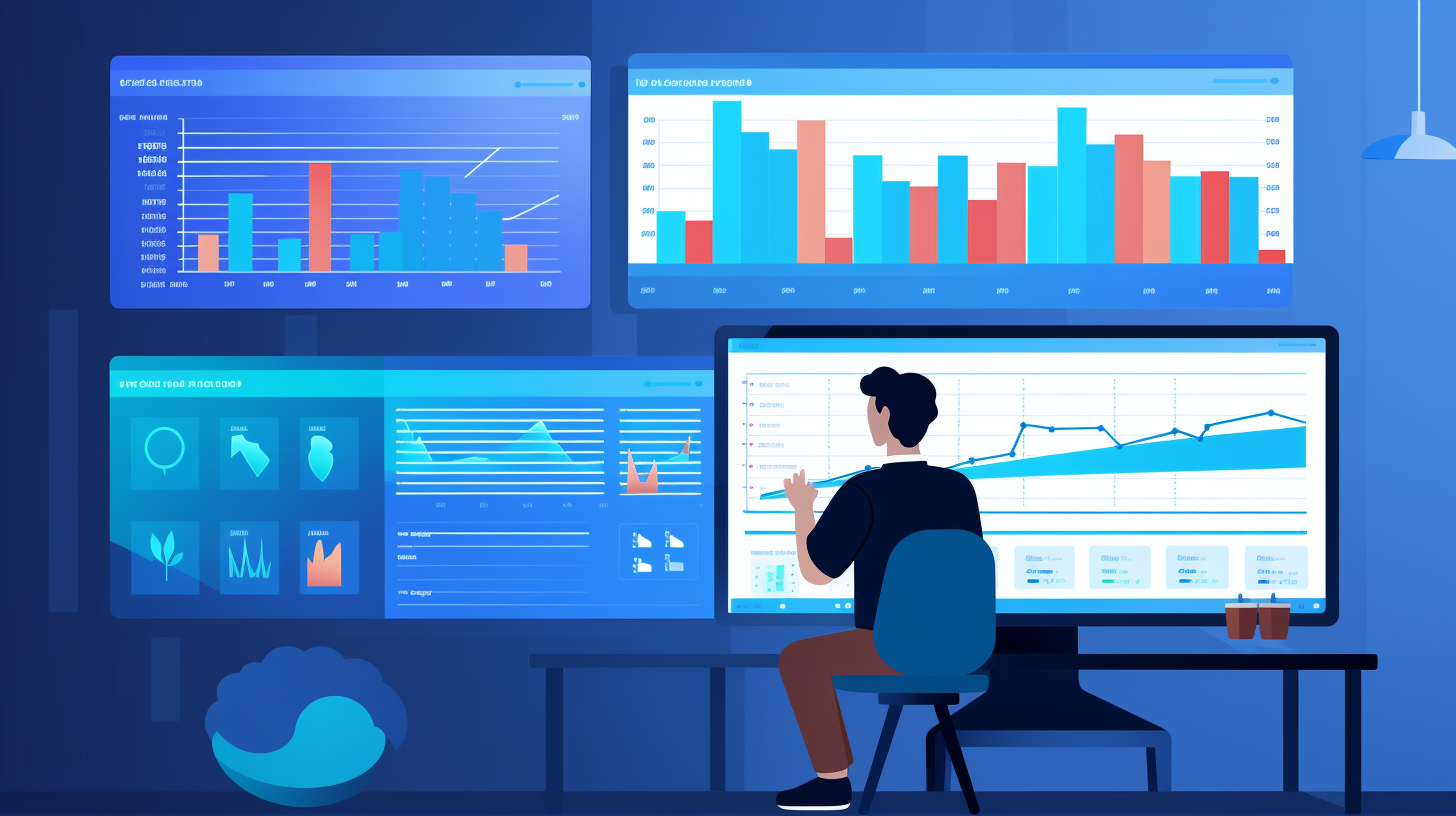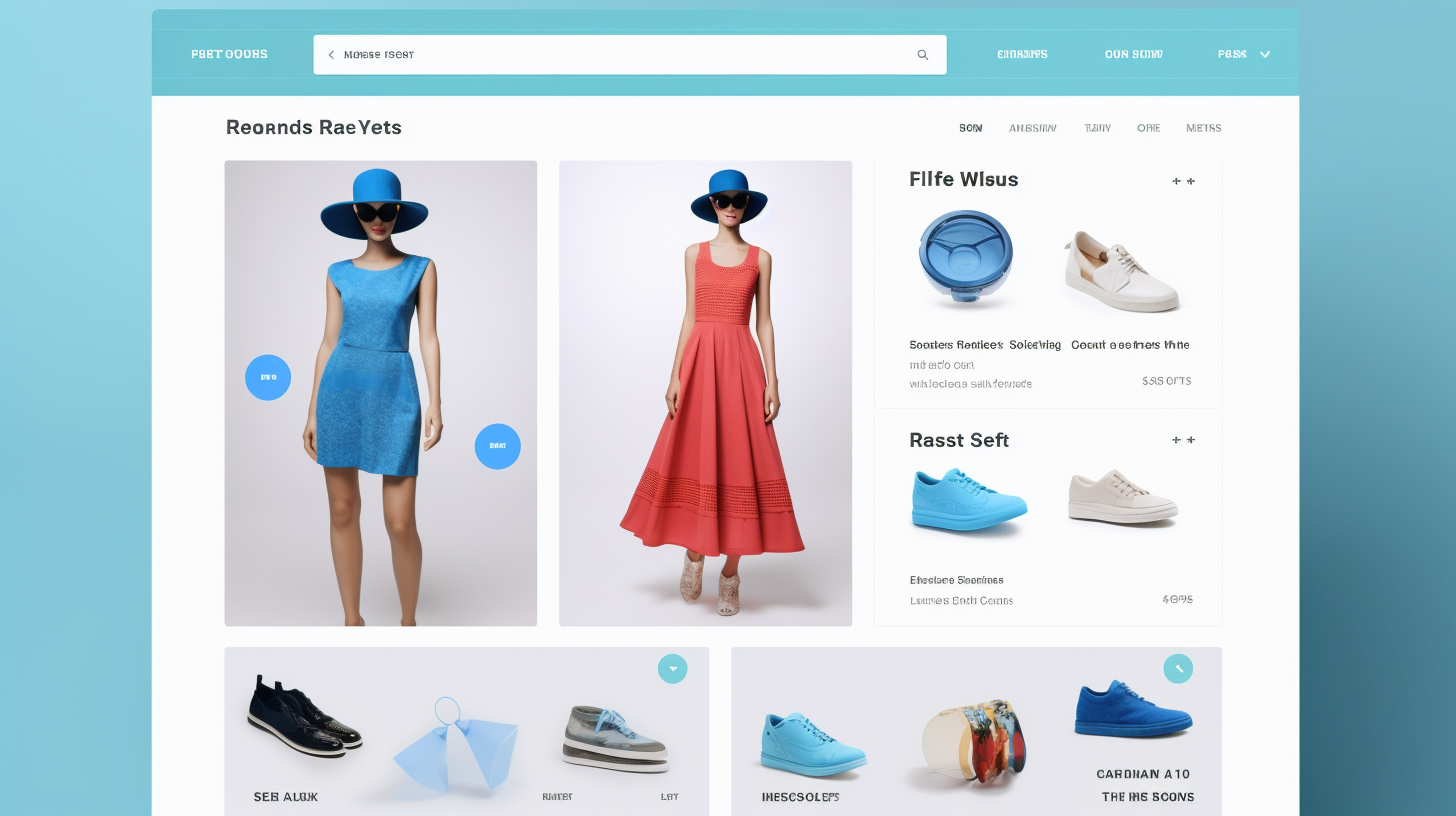欢迎来到专业 WordPress 网站创建和维护的世界!在本文中,我们将探讨创建和管理 WordPress 网站的最佳实践,该网站不仅外观精美,而且性能卓越。
WordPress 已成为全球最受欢迎的内容管理系统 (CMS) 之一,为约 40% 的网站提供支持。它的多功能性、用户友好的界面以及广泛的插件和主题选项使其成为个人、企业和组织的首选。
无论您是经验丰富的开发人员还是刚刚起步,实施这些最佳实践都将确保您的 WordPress 网站不仅符合行业标准,而且还能在竞争中脱颖而出。因此,让我们深入探索如何创建和维护专业的 WordPress 网站,以提供卓越的用户体验并实现您的业务目标。
建立品牌设计标准
要想打造引人注目的在线形象,拥有统一的品牌设计至关重要。您的网站通常是潜在客户的第一个接触点,您希望给客户留下积极而持久的印象。通过建立品牌设计标准,您可以确保网站的每个方面都反映出您的品牌身份和价值观。
有凝聚力的网站设计
品牌设计标准的一个关键组成部分是创建具有凝聚力的网站设计。这意味着您网站上的每个页面都应具有一致的外观和感觉,从配色方案到排版。以下是一些帮助您实现具有凝聚力的网站设计的提示:
- 定义您的品牌标识: 在开始设计网站之前,重要的是要清楚了解您的品牌身份。您的品牌价值是什么?您的目标受众是谁?通过定义这些元素,您可以创建与您的品牌相符的设计。
- 选择颜色方案: 颜色在品牌塑造中起着至关重要的作用。选择能够代表您的品牌个性并能引起目标受众共鸣的调色板。在整个网站中一致使用这些颜色以创造视觉和谐。
- 创建徽标: 您的徽标是您品牌的门面。它应该独一无二、令人难忘且具有视觉吸引力。将您的徽标融入您的网站设计中,以提高品牌知名度并创造具有凝聚力的视觉体验。
- 选择正确的字体: 字体设计决定了网站基调。选择易读、能反映品牌个性且协调一致的字体。尽量使用有限数量的字体(通常为两三种),以保持简洁一致的外观。
- 设计一个用户友好的布局: 您的网站布局应直观且易于浏览。考虑信息流、元素位置和整体结构。精心设计的布局可增强用户体验并鼓励访问者进一步探索您的网站。
- 针对移动设备进行优化: 在当今以移动设备为中心的世界里,拥有一个在所有设备上都看起来很棒的响应式网站至关重要。确保您的设计能够无缝适应不同的屏幕尺寸,并保持其跨平台的一致性。
请记住,一致性是品牌设计标准的关键。通过创建具有凝聚力的网站设计,您可以建立强大且令人难忘的品牌形象,从而引起目标受众的共鸣。
当您着手创建或改造 WordPress 网站时,请花点时间建立品牌设计标准。通过使网站设计与您的品牌标识保持一致,您将创造出具有视觉吸引力和专业的在线形象,让您在竞争中脱颖而出。
优化速度
在当今快节奏的数字世界中,速度就是一切。无论是浏览互联网、观看流媒体视频还是在线购物,用户都希望获得快速、无缝的体验。网站加载缓慢不仅会让用户感到沮丧,还会对搜索引擎排名产生负面影响。那么,如何优化网站速度并提高用户体验和 SEO 排名呢?让我们来一探究竟。
提高用户体验和 SEO 排名
快速加载的网站不仅能让用户满意,还能向搜索引擎发出积极信号。在 SEO 方面,网站速度已成为一个关键的排名因素。据 Google 称,移动页面加载时间延迟一秒可能会对转化率产生高达 20% 的影响。访问者更有可能离开加载缓慢的网站并直接转向您的竞争对手。
因此,显然优化网站速度至关重要。以下是一些可帮助您实现更快网站速度的策略:
- 选择可靠的托管服务提供商:提供高效服务器资源的可靠托管服务提供商是快速网站的基础。寻找专门提供 WordPress 托管且拥有优化服务器以实现最高速度的提供商。
- 优化图片:图片通常是网页上最大的文件,因此优化图片可以大大提高网站速度。在不牺牲质量的情况下压缩图片,并考虑使用延迟加载,即仅在用户向下滚动页面时加载图片。
- 最小化并合并文件:压缩是指从 CSS 和 JavaScript 文件中删除不必要的字符和空格的过程。将这些文件合并为一个文件可减少 HTTP 请求的数量,从而缩短加载时间。
- 启用缓存:缓存会保存您网站页面的副本并将其提供给用户,而无需向服务器生成新的请求。这大大减少了服务器的负载并缩短了页面加载时间。您可以使用 W3 Total Cache 或 WP Super Cache 等 WordPress 插件来启用缓存。
- 优化代码:干净且优化的代码对于快速的网站至关重要。删除任何不必要的插件或主题,因为它们会降低网站速度。定期更新您的 WordPress 安装和插件,以确保您拥有最新的性能增强功能和安全补丁。
请记住,快速的网站不仅可以改善用户体验,还可以提高您的 SEO 排名。通过优化 WordPress 网站的速度,您可以为访问者提供更好的浏览体验,同时在搜索引擎结果中领先于竞争对手。
因此,立即采取必要的步骤优化您的网站速度,并获得改善的用户体验和更高的 SEO 排名的回报!
响应式设计
适应不同的屏幕尺寸和设备
在当今的数字世界中,网站能够适应用户可能使用的各种屏幕尺寸和设备至关重要。随着移动设备的快速增长,响应式设计已成为任何网站的必需品,而不是奢侈品。
响应式设计为何如此重要?
- 提供无缝的用户体验:响应式网站可确保您的内容在各种设备(如台式机、笔记本电脑、平板电脑和智能手机)上以正确且最佳的方式显示。无论用户使用哪种设备,都可以轻松浏览和与您的网站互动。
- 覆盖更广泛的受众:随着越来越多的人通过移动设备访问互联网,响应式设计可让您满足更广泛的受众。通过跨设备提供出色的用户体验,您可以增加吸引和留住访客的机会。
- 提高搜索引擎排名:响应式设计是搜索引擎对网站进行排名时考虑的一个重要因素。例如,谷歌在其搜索结果中优先考虑适合移动设备的网站,青睐那些提供更好用户体验的网站。
响应式设计如何工作?
响应式设计使用 CSS 媒体查询来检测用户的屏幕尺寸并相应地调整网站的布局和元素。无论屏幕有多大或多小,它都能确保网站的内容、图像和导航都能得到适当显示。
响应式设计的主要功能之一是流动网格。响应式设计的网站不使用固定宽度的布局,而是使用可适应屏幕尺寸的灵活网格。这可在不同设备上提供更流畅、无缝的体验。
响应式设计有什么好处?
- 一致的品牌:响应式设计可确保您的网站在不同设备上保持一致的外观和感觉,从而增强您的品牌形象。用户会欣赏视觉一致性,并更有可能信任您的品牌。
- 提高加载速度:响应式设计消除了对单独移动版本的需要,从而优化了网站的加载速度。用户无需等待网站的不同版本加载,从而带来更快、更流畅的体验。
- 维护更轻松:响应式设计让您只需维护一个网站,无需为不同设备维护多个版本。这使更新和更改变得更简单、更高效。
- 经济高效:虽然开发响应式网站可能需要一些初期投资,但从长远来看,它可以为您节省资金。您无需投资单独的移动版本或花费额外资源来维护多个网站。
结论
在当今以移动设备为主导的世界,确保您的网站采用响应式设计是其成功的关键。它不仅能提供无缝的用户体验,还能帮助您吸引更广泛的受众、提高搜索引擎排名并保持一致的品牌形象。因此,不要忽视响应式设计的重要性 - 确保您的网站能够适应不同的屏幕尺寸和设备。
保持 WordPress 更新
WordPress 是当今最受欢迎且用户友好的内容管理系统 (CMS) 之一。它为数百万个网站提供支持,并不断发展以满足用户的需求。但是,与任何软件一样,WordPress 需要定期更新以确保最佳性能和安全性。
安全性和性能
定期更新 WordPress 安装、主题和插件对于维护网站的安全性和性能至关重要。原因如下:
- 安全:WordPress 开发社区发布的每个更新都会解决已知的安全漏洞并提供修复程序,以保护您的网站免受潜在威胁。通过保持 WordPress 安装为最新,您可以确保使用最新的安全补丁和保护措施。
- 表现:更新不仅解决了安全问题,而且通常还包括性能改进。随着 WordPress 的发展,开发人员找到了优化代码并提高 CMS 整体速度和效率的方法。通过更新 WordPress 版本,您可以利用这些改进来确保您的网站发挥最佳性能。
- 兼容性:插件和主题是 WordPress 网站的重要组成部分,可让您添加功能并自定义网站的外观。但是,随着时间的推移,这些插件和主题可能会过时或不再与最新版本的 WordPress 兼容。通过定期更新 WordPress 安装以及相关主题和插件,您可以确保兼容性并防止可能导致网站停机或功能问题的潜在冲突。
虽然定期更新 WordPress 网站似乎很困难,但其好处远远大于不便。WordPress 借助其内置的更新功能简化了更新过程,让您的网站保持最新状态变得轻而易举。
请记住,忽略更新 WordPress 安装、主题和插件可能会使您的网站容易受到安全威胁,并对其性能产生负面影响。及时更新以确保您的网站安全、优化并顺利运行。您的网站及其访问者会感谢您的付出!
附加信息:定期更新您的 WordPress 安装、主题和插件,以确保应用最新的安全补丁。 在此处的官方文档中了解有关更新 WordPress 的更多信息.
优先考虑用户体验
在快节奏的网页设计世界中,一个不容忽视的因素就是用户体验 (UX)。一个网站可以拥有令人惊叹的视觉效果,但如果它无法为访问者提供愉快而无缝的体验,它就无法给人留下持久的印象。那么,如何确保您的网站优先考虑用户体验呢?让我们来探讨一些关键策略:
遵循设计趋势
设计趋势来来去去,但不变的是需要以用户为中心的方法。通过跟上最新的设计趋势,您可以确保您的网站保持现代和相关性,同时仍然优先考虑目标受众的需求和偏好。以下是一些可以增强用户体验的设计趋势:
- 极简主义:极简主义设计注重简洁、线条清晰和留白充足。通过整理网站并专注于基本元素,您可以创建更直观、更人性化的界面。
- 响应式设计:随着移动设备的使用日益增多,响应式设计已成为必需品。确保您的网站能够在各种屏幕尺寸和设备上无缝运行,将增强用户体验并吸引访客。
- 微交互:微交互是微妙的动画或视觉提示,当用户在您的网站上执行某些操作(例如将鼠标悬停在按钮上或向下滚动页面)时,它们会向用户提供反馈。这些小的交互可以大大提高用户参与度和满意度。
视觉上吸引人且引人入胜
虽然功能性和可用性至关重要,但美观性在创造令人难忘的用户体验方面也发挥着重要作用。具有视觉吸引力的网站可以吸引访客,鼓励他们停留更长时间,并最终将他们转变为忠实客户。以下是一些使您的网站具有视觉吸引力和吸引力的策略:
- 策略性地使用颜色:色彩心理学在影响用户行为和情绪方面起着至关重要的作用。选择符合您的品牌形象并能唤起目标受众所需情绪的配色方案。使用对比色来突出显示重要元素并保持视觉层次。
- 引人注目的视觉效果:高品质的图片、视频和图形可以显著增强您网站的视觉吸引力。使用引人注目的视觉效果,引起目标受众的共鸣,并有效地传达您的信息。
- 明确的行动号召:精心设计的号召性用语 (CTA) 按钮可以引导用户无缝地完成您的网站旅程。确保它从其他内容中脱颖而出,并清楚地传达您希望用户采取的行动。
优先考虑用户体验应该是每个网页设计项目的核心。通过遵循当前的设计趋势并创建一个具有视觉吸引力和吸引力的网站,您可以确保用户获得积极的体验,让他们再次光顾。因此,花点时间了解您的目标受众,实施以用户为中心的设计原则,并观察您的网站是否蓬勃发展。
可靠的托管和 SSL 证书
在当今的数字时代,安全应该是任何网站所有者的首要任务。确保网站及其处理的数据安全的重要步骤之一是选择可靠的托管服务提供商并安装 SSL 证书以确保数据传输安全。
安全数据传输
当在您的网站和其用户之间传输数据时,您希望确保这些信息保持机密并免受任何潜在威胁。这就是 SSL 证书发挥作用的地方。
SSL 证书是安全套接字层的缩写,是一种数字证书,用于加密网站与其访问者之间传输的数据。这种加密会对数据进行打乱,使得未经授权的人几乎不可能拦截或读取数据。在安全数据传输方面,需要考虑以下几点:
- 加密:SSL 证书使用加密算法来保护数据传输。这意味着即使有人设法拦截数据,他们也无法在没有加密密钥的情况下解密其内容。
- 信任与可信度:在您的网站上安装 SSL 证书可为您的用户提供额外的信任和可信度。这表明您非常重视他们的安全,并可增强他们与您的网站共享敏感信息的信心。
- SEO优势:Google 等搜索引擎会优先考虑已安装 SSL 证书的网站。他们将网站安全性视为排名因素,从而使启用 SSL 的网站在搜索引擎结果页面 (SERP) 上略占优势。
- 防范网络钓鱼攻击:SSL 证书有助于保护您的网站免受网络钓鱼攻击,黑客会试图冒充您的网站以获取敏感的用户信息。有了有效的 SSL 证书,这些攻击者欺骗您的用户就会变得更加困难。
选择托管服务提供商时,必须确保他们提供可靠的安全功能,包括 SSL 证书支持。以下是一些需要考虑的因素:
- SSL 证书可用性:检查托管服务提供商是否提供对 SSL 证书的支持,以及是否提供一种简单的安装和管理证书的方法。
- 安全措施:寻找具有强大安全措施的托管服务提供商,例如防火墙、入侵检测系统和定期安全更新。
- 24/7 监控:确保托管服务提供商有专门的团队监控服务器和网络,以防任何潜在的安全威胁。
- 客户支持:选择提供优质客户支持的托管服务提供商,这样您就可以快速解决可能出现的任何与安全相关的问题。
请记住,投资可靠的托管服务提供商并安装 SSL 证书对于保护您的网站和确保安全的数据传输至关重要。采取主动措施保护您的网站比处理安全漏洞的后果要好。因此,请明智选择并优先考虑您的网站及其用户的安全。
考虑目标受众
在设计网站时,必须考虑目标受众及其特定需求。您的网站应易于使用、具有视觉吸引力,并提供符合受众兴趣的有价值的信息或服务。通过了解您的受众是谁以及他们对网站的期望,您可以创建一种有效吸引访问者并将其转化为客户的设计。
设计时考虑受众需求
为了确保您的网站满足目标受众的需求,在设计过程中需要牢记以下几个关键因素:
- 用户体验(UX): 优先考虑打造无缝且直观的用户体验。考虑网站的导航、布局和整体流程,让用户轻松找到所需内容。整合用户友好型功能,例如清晰的号召性用语按钮和可适应不同屏幕尺寸的响应式设计。
- 视觉吸引力: 您的网站设计应具有视觉吸引力,并与您的品牌形象相符。使用能引起目标受众共鸣的颜色、字体和图像。具有视觉吸引力的网站可以给人留下积极的第一印象,并鼓励用户进一步探索。
- 内容相关性: 定制网站内容以满足目标受众的特定需求和兴趣。进行彻底的研究,了解他们的痛点、偏好以及他们正在寻找的信息。制作引人入胜且信息丰富的内容,满足这些需求,并将您的品牌定位为行业权威。
- 移动优化: 随着移动设备使用量的大幅增加,优化您的网站以适应移动设备至关重要。确保您的网站具有响应能力,这意味着它可以无缝调整以适应不同的屏幕尺寸,从而确保在不同设备上获得一致且用户友好的体验。
- 页面加载速度: 加载缓慢的网站会让用户感到沮丧,并导致他们在进一步浏览之前就离开。通过优化图像大小、最小化代码和利用缓存技术来优化网站速度。快速加载的网站不仅可以改善用户体验,还会影响您的搜索引擎排名。
- 清晰的信息: 向受众清晰地传达品牌的价值主张和关键信息。使用简洁且引人注目的标题、要点和副标题来有效传达信息。确保网站内容易于浏览和理解,因为用户通常会浏览网页。
通过在设计网站时充分考虑目标受众的需求,您可以打造引人入胜的在线形象,从而推动转化并培养长期客户关系。请记住,您的网站应作为品牌的数字延伸,并成为受众的宝贵资源。
内部链接: 要了解有关响应式设计的重要性的更多信息,请阅读我们的文章 响应式设计为何如此重要.
值得信赖的插件和主题
在构建安全的网站时,您可以采取的第一步是选择和使用可信赖的插件和主题。由于可用的选项种类繁多,因此决定在您的网站上安装哪些插件和主题可能令人不知所措。但是,通过花时间研究并选择信誉良好的插件和主题,您可以显著增强网站的安全性。
维护网站安全
以下是通过使用可信插件和主题维护网站安全时需要考虑的一些关键点:
- 研究与评论: 在安装插件或主题之前,请花点时间研究并阅读其他用户的评论。寻找下载量高、评价积极且定期更新的插件和主题。用户反馈可以提供有关插件或主题功能和安全性的宝贵见解。
- 兼容性和更新: 确保您选择的插件和主题与您网站的平台兼容,无论是 WordPress、Joomla 还是其他内容管理系统 (CMS)。此外,定期检查和更新您的插件和主题,以便从最新的安全补丁和错误修复中受益。过时的插件和主题可能会让您的网站容易受到攻击。
- 可靠来源: 仅从可信赖的来源下载插件和主题。坚持使用 CMS 的官方插件和主题目录以及信誉良好的市场和开发人员。避免从第三方网站或不可靠的来源下载,因为这些可能包含隐藏的恶意软件或恶意代码。
- 漏洞监控: 密切关注您安装的插件和主题的安全性。订阅开发人员或相关安全社区的安全警报和更新。这将帮助您随时了解任何已报告的漏洞,并确保您可以立即采取行动来解决它们。
通过遵循这些做法,您可以降低安全漏洞的风险并加强您的网站以抵御潜在威胁。请记住,安全是一个持续的过程,因此定期检查和更新您的插件和主题对于维护安全的网站至关重要。
附加信息: 使用可信赖的插件和主题,并定期审查和更新以维护网站安全。
定期备份
作为数据保护和灾难恢复的重要方面,定期备份对于各种规模的企业都至关重要。无论您是小型初创公司还是大型企业,确保数据的安全性和可用性都至关重要。定期备份可保护您的信息,并在数据丢失或系统故障时轻松恢复,让您高枕无忧。
以下是定期备份至关重要的几个主要原因:
- 防止数据丢失: 定期备份数据有助于防止重要信息丢失。意外删除、硬件故障、自然灾害或网络攻击都可能导致数据丢失。通过定期备份,您可以单独存储数据副本,确保即使一个系统发生故障,您的信息仍然安全。
- 防范勒索软件: 随着勒索软件攻击的兴起,黑客会劫持数据直到支付赎金,定期备份可以挽救生命。通过拥有最近的备份,您可以轻松恢复系统和数据,而不会屈服于网络犯罪分子的要求。
- 更快的恢复: 在数据丢失事件中,时间至关重要。定期备份数据可以加快恢复速度。无需从头开始,您可以快速高效地将系统恢复到以前的状态,最大限度地减少停机时间并实现业务连续性。
- 合规性和法律要求: 许多行业对数据保留和保护都有特定的合规性和法律要求。定期备份有助于满足这些义务,确保数据安全存储并可在需要时访问。
为了有效地管理和维护定期备份,请考虑以下最佳做法:
- 根据数据的关键性及其变化率确定备份频率。
- 利用可靠的备份解决方案来自动化该过程,以确保一致性和可靠性。
- 将备份存储在单独的设备或异地位置,以防止物理损坏或盗窃。
- 定期测试恢复过程以验证备份的完整性和有效性。
- 制定符合您的业务运营和数据需求的备份计划。
请记住,定期备份不仅可以保护您的宝贵信息,还可以让您高枕无忧,并帮助确保您的业务能够顺利从任何不可预见的事件中恢复。不要等到为时已晚——今天就开始实施定期备份策略吧!
备份数据 并保护您的业务免遭数据丢失。
WordPress 管理工具
管理 WordPress 网站可能是一项复杂的任务,尤其是当您的网站规模和受欢迎程度不断增长时。幸运的是,有几种 WordPress 管理工具可用于简化流程并确保顺利运行。从监控性能到简化更新,这些工具对于维护专业的 WordPress 网站非常有用。让我们探索一些顶级工具及其优点:
1. WordPress.com 的 Jetpack
Jetpack 是一款功能强大的一体化插件,提供一系列网站管理必备功能。它提供实时备份、安全扫描和垃圾邮件防护,确保您的网站安全无虞。此外,Jetpack 还提供分析和营销工具,帮助您跟踪访客统计数据并优化网站,以获得更好的性能。
2. ManageWP
ManageWP 是一个全面的管理平台,可让您从单个仪表板处理多个 WordPress 网站。它通过提供一个集中式平台来安装主题、插件和 WordPress 核心的更新,从而简化了网站更新。使用 ManageWP,您还可以安排自动备份并监控网站性能,确保您的网站始终顺利运行。
3. MainWP
MainWP 是另一个用于管理多个 WordPress 网站的流行工具。它提供了一个用户友好的界面,可同时更新所有网站上的主题、插件和 WordPress 核心。MainWP 还提供强大的安全功能,包括恶意软件扫描和活动日志记录,以保护您的网站免受潜在威胁。
4. UpdraftPlus
定期备份对于网站的安全性和完整性至关重要。UpdraftPlus 是一款顶级备份插件,可让您安排自动备份并将其存储在各种位置,包括 Dropbox 和 Google Drive 等云存储平台。使用 UpdraftPlus,您可以在数据丢失或其他紧急情况下轻松恢复您的网站。
5. Yoast SEO
搜索引擎优化 (SEO) 对于提高您的网站在搜索引擎结果中的可见性至关重要。Yoast SEO 是一款流行的插件,可帮助您优化搜索引擎的内容。它为改善您网站的 SEO 提供了宝贵的见解和建议,包括优化元标题、描述和关键字使用。
这些只是众多可用的 WordPress 管理工具中的几个示例。根据您特定的网站需求,您可以探索更多选项,找到完美的工具组合,帮助您高效地管理和维护专业的 WordPress 网站。
常见问题
- 创建专业 WordPress 网站的最佳实践是什么?
创建专业 WordPress 网站的一些最佳实践包括:1. 选择可靠的托管服务提供商,2. 选择专业的 WordPress 主题,3. 优化网站速度和性能,4. 使用高质量和优化的图像,5. 实施适当的网站安全措施。
- 专业的网站是否有必要使用专业的WordPress主题?
虽然这不是必需的,但使用专业的 WordPress 主题可以极大地增强您网站的外观、功能和用户体验。专业主题通常具有高级功能、自定义选项和移动响应能力,可以展示您的专业性并提高您网站的可信度。
- 如何优化我的 WordPress 网站的速度和性能?
要优化 WordPress 网站的速度和性能,您可以:1. 使用缓存插件,2. 优化图像并使用延迟加载,3. 最小化并合并 CSS 和 JavaScript 文件,4. 启用浏览器缓存,以及 5. 选择服务器响应时间快速的可靠托管服务提供商。
- 我应该为我的专业 WordPress 网站实施哪些安全措施?
为您的专业 WordPress 网站实施一些重要的安全措施:1. 保持 WordPress 和插件更新,2. 使用强大而独特的密码,3. 安装安全插件,4. 定期备份您的网站,5. 限制登录尝试并防止暴力攻击。
- 我不需要任何编码知识就可以创建专业的 WordPress 网站吗?
是的,您可以使用拖放式页面构建器和预先设计的模板创建专业的 WordPress 网站,无需任何编码知识。WordPress 提供用户友好的界面和大量插件和主题,让您可以轻松自定义和创建具有专业外观的网站。



















